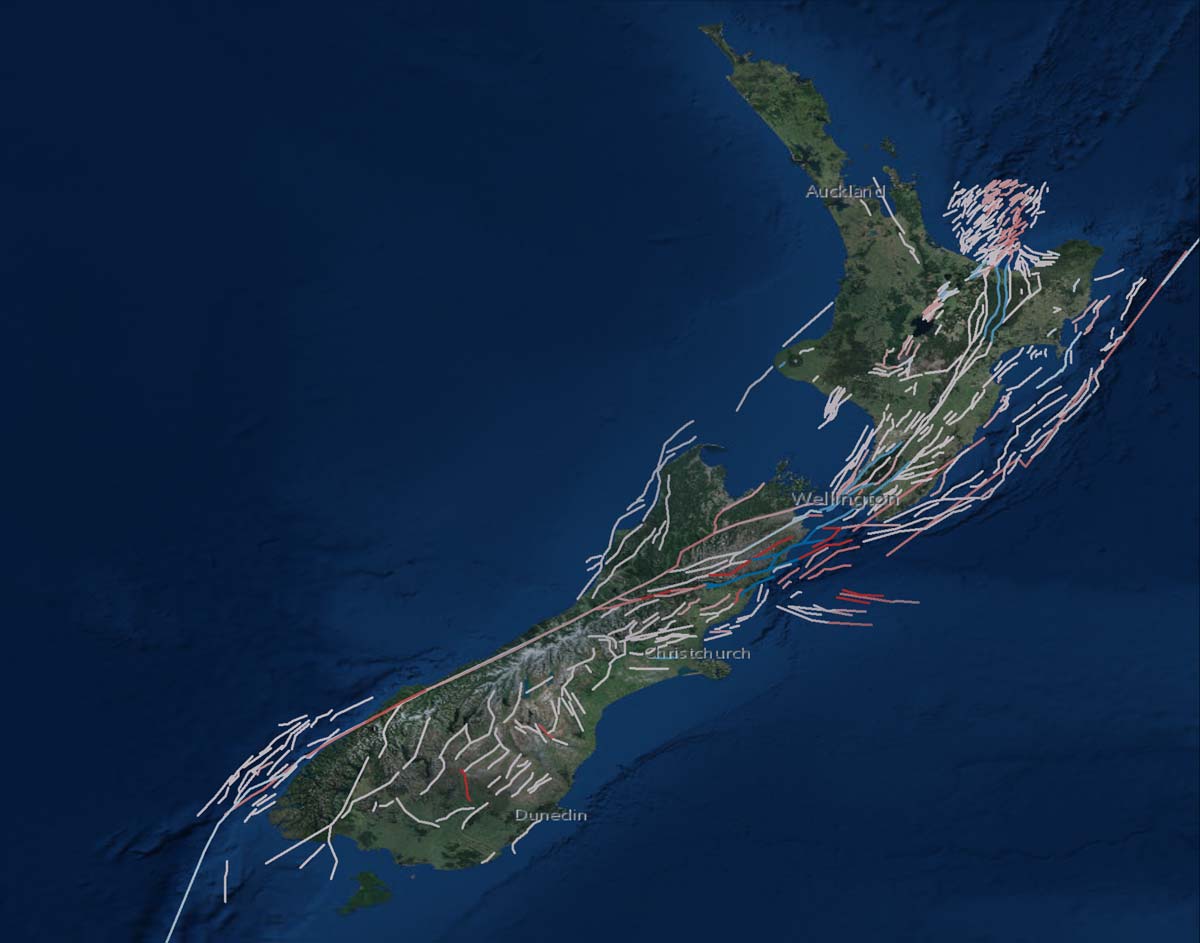
Time-Dependent vs. Time-Independent Views of Seismicity
A time-dependent view of seismicity enables more accurate assessments of your earthquake risk than a time-independent view.

Time-Independent View

Time-Dependent View
Learn how kinematic modeling informed AIR’s view of seismic risk in New Zealand.
A time-dependent view of seismicity enables the modeling of changes in rupture potential for faults affected by the 2016 M7.8 Kaikoura earthquake, whereas a time-independent view would not.

Difference In Rupture Probability
Low
For a comprehensive view of earthquake risk, a time-dependent view of seismicity should be used.
The updated AIR Earthquake Model for New Zealand includes:
Time-dependent and time-independent views of seismicity for both 10K and 100K simulated years
Explicit modeling of complex multi-fault rupture scenarios
Shake, tsunami, landslide, liquefaction, and fire-following sub-perils
The most detailed soil maps available
A trans-ocean basin view of tsunami risk
Lessons learned from the 2010/2011 Canterbury Earthquake Sequence, the 2016 Kaikoura earthquake, the 2011 M9.0 Tohoku, Japan, earthquake, and other worldwide earthquakes
